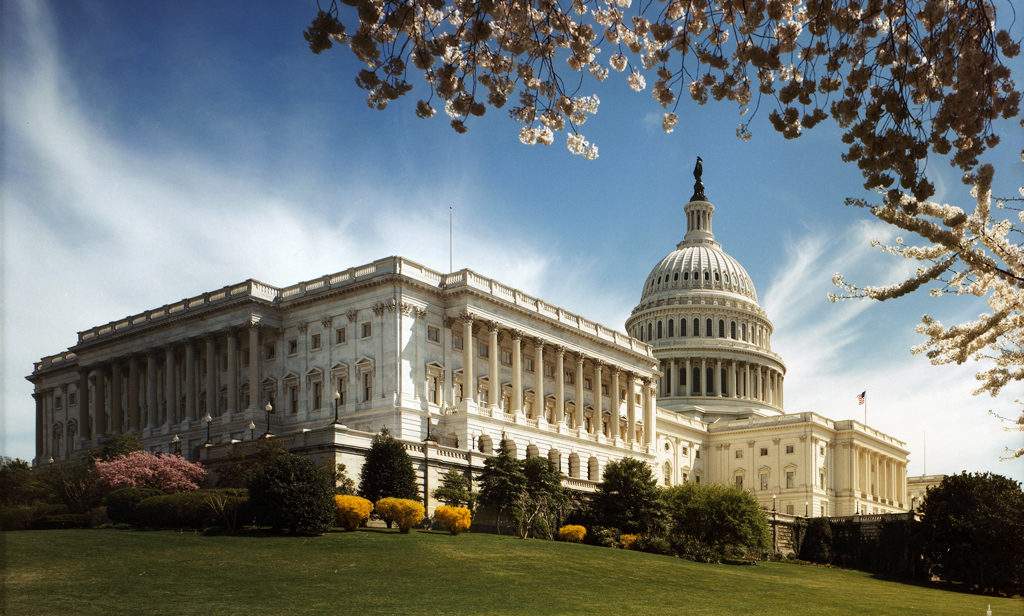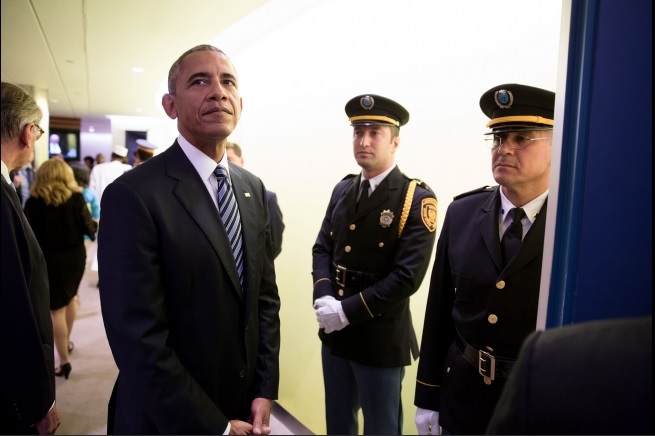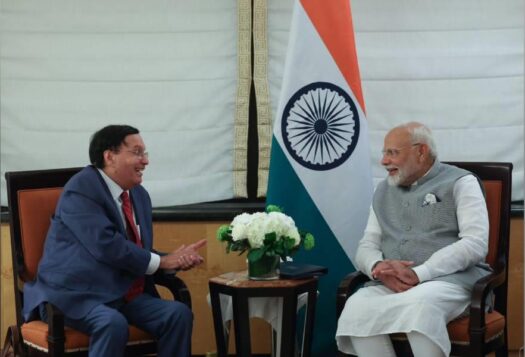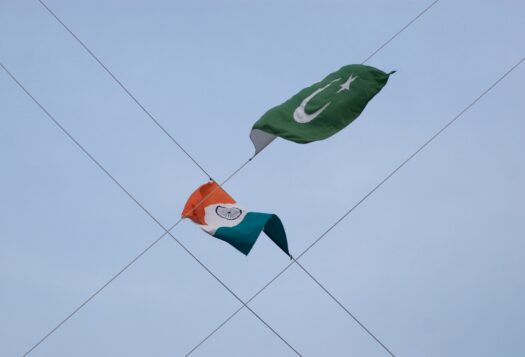
“[A] renewed debate on the role of the treaty to ban nuclear weapons testing is necessary,” writes Reshmi Kazi. Most Republican Senators on Capitol Hill would disagree. I couldn’t agree more. Republican Senators who have voted dozens of times to upend “Obamacare” argue that it’s one and done for the CTBT: they assert that, after the Bill Clinton administration failed to secure the necessary two-thirds vote for ratification in 1999, this treaty no longer has a pulse.
In the view of CTBT opponents, this conclusion was reaffirmed by the George W. Bush administration’s clearly enunciated unwillingness to pursue ratification, and the Barack Obama administration’s disinterest in another Senate vote, which would again have failed to garner 67 Senatorial supporters. Indeed, when Democrats last held a majority in the Senate, then-Foreign Relations Committee Chairman (and now Secretary of State) John Kerry did not even convene hearings on the CTBT.
The Obama State Department, like Senate Democrats, has been risk averse when it comes to negotiating new treaties or securing consent to ratify old ones. They know full well that a new breed of Republicans on Capitol Hill has no love for treaties. After the CTBT fiasco in 1999, Democrats have thought discretion the better part of valor, and have avoided stirring up hornets’ nests. President Obama had no choice but to go the treaty route for strategic arms reductions with Moscow, since the flimsy treaty negotiated by his predecessor had no meaningful numerical constraints or verification arrangements.
The Senate consented to ratification of “New START” with votes to spare – thanks to the administration’s extremely generous pledges for replacing old missiles, subs and bombers with new ones. But Mr. Obama hasn’t gone to this well a second time. The informal Republican rule for Democratic Presidents since Jimmy Carter has been one treaty, not two. (President Carter actually secured the Senate’s consent for two Panama Canal accords, but they count as one here. He shelved plans to seek Senate consent to ratify the SALT II accord. President Clinton secured the necessary votes for the Chemical Weapons Convention before getting slammed on the CTBT.)
Cognizant of the steep climb required for the Senate’s consent to treaty ratification, the Obama Administration negotiated New START in a way that could accommodate a follow-on agreement mandating deeper strategic arms reductions without needing a two-thirds majority vote. The Iran nuclear agreement and the Paris climate pact were structured so as not to require Republican consent.
The CTBT is another kettle of fish. This Treaty cannot enter into force without the consent of two-thirds of the Senate. As noted in SAV’s CTBT at 20 essays, the CTBT also requires ratifications from India, Pakistan, China and three other outliers.
The Democratic Party’s strategy of leaving well enough alone with the CTBT has not served the Treaty’s object and purpose. After all, the Obama Administration stirred up hornets whether it sought treaty ratifications or sought to avoid treaty ratifications. Not seeking reaffirmation of the CTBT left the field open to hornets – as well as termites. (Apologies for the mixed metaphor.) Termites are, however, eating away at the foundations of the few existing treaties that remain from the 1980s and 1990s.
As with housing structures, the work of termites may not be readily apparent unless prompted by a reason for discovery. President Obama’s decision to pursue a United Nations Security Council(UNSC) resolution and parallel statement on the CTBT by the Security Council’s five Permanent Members prompted a process of discovery. Documents and testimony provided at a Senate Foreign Relations Committee Hearing on September 7 revealed that the Bush Administration sought to get out from under the CTBT’s central object and purpose of not carrying out nuclear explosive testing.

President Obama has, with his Prague speech and subsequent declarations, re-imposed U.S. obligations under customary international law to respect the Treaty’s object and purpose. The UNSC vote and the accompanying P-5 statement place these obligations in bold and italics. Some Republican legislators are pushing back, refusing to acknowledge customary international law and the authority of one administration to override the policy preferences of its predecessor regarding the CTBT, while threatening to withhold funds for the Treaty Organization’s International Monitoring System.
Where does this leave the CTBT? Treaty ratification continues to be a contentious subject. No substantive hearings have been held since the 1999 vote. Meanwhile, much has changed. The two major arguments against the Treaty back then no longer hold water. The U.S. stockpile stewardship program, designed to allow confidence in warhead designs absent explosive testing, was then an idea; now it is a reality. Concerns about monitoring extremely low yield tests that might be of military significance have also been addressed. Improvements in treaty monitoring by means of secret U.S. “National Technical Means” and the parallel, public data gathered by the Treaty Organization’s International Monitoring System are also a reality.
Lengthy hearings are warranted in which expert witnesses can testify to these advances. Hearings are also needed on the fundamentals of Constitutional and International Law. If enough Senators attend to the facts of these matters with open minds, while weighing the evident advantages of the CTBT against its modest risks, the CTBT might secure 67 votes. But this will be a hard climb.
Where does this leave India and Pakistan? As Reshmi Kazi and Ruhee Neog note, the fingerprints of Jawaharlal Nehru are all over the CTBT, but New Delhi has placed itself in the awkward position of not even voting in favor of annual, ritualistic United Nations General Assembly resolutions in support of the treaty.
Shams Zaman writes: “potential incentives for India and Pakistan to sign and ratify the CTBT would likely have to be coupled together.” This seems partly true, but I would amend this formulation a bit. As Pakistani leaders have often repeated, a unilateral step by India to sign and ratify the CTBT would prompt Pakistan to follow suit. So in this sense, connectivity is widely assumed. A unilateral step by Pakistani leaders to sign and ratify the CTBT would place Pakistan in a positive light and amend Pakistan’s negative international image. It would advance Pakistan’s case for membership in the Nuclear Suppliers Group(NSG), while leaving India in a bind: either having to follow Pakistan’s lead, or having its candidacy for membership into the NSG seriously set back. But this bold move seems unlikely. Pakistan’s nuclear enclave is not inclined toward creative diplomatic gambits. This idea was reflexively rubbished when suggested by Toby Dalton and me in A Normal Nuclear Pakistan.
It also seems unlikely that India’s leaders would choreograph a joint signature and ratification. To do so, as Shams Zaman notes, would convey equal status to Pakistan while facilitating joint entry into the NSG. New Delhi won’t play this game. So, unless Pakistan’s nuclear enclave changes its spots, the only coupling I foresee is one that begins with New Delhi’s signature on the CTBT.
As Beenish Altaf writes, there is a long distance between “no” and “never” when it comes to nuclear testing. The United States Senate remains the key to entry into force of the CTBT. As goes the United States, so goes China. As goes China, so goes India. As goes India, so goes Pakistan. All of these countries — as well as Russia — maintain and upgrade facilities to carry out non-explosive testing and experiments, but none seem inclined to join North Korea, the only state to have carried out explosive nuclear tests in the Twenty-First Century.
I agree with Beenish, Ruhee, Shams, and Reshmi that treaty ratifications are not in the offing – at least not in the near term. But the UNSC resolution is a reminder that the Treaty still matters, and that it is worth waiting for. If it is true, as Ruhee Neog writes, that, “the Indian establishment considers the CTBT a thing of the past,” the Indian establishment is mistaken. Supporters of the Treaty in the United States are in this for the long haul.
Editor’s note: South Asian Voices (SAV) endeavors to ensure its contributors are influencing policy debates in India, Pakistan, and the United States. To this end, our feature Experts Ki Rai periodically has experienced South Asia specialists weigh-in on contributors’ analysis, in the hope of continuing to advance meaningful dialogue on the subcontinent and beyond. In this edition of Experts ki Rai, Michael Krepon of the Stimson Center responds to SAV’s CTBT at 20 series in which contributors explore whether the Comprehensive Nuclear-Test-Ban Treaty (CTBT) is still relevant today and why, how the stance of India and Pakistan—two of only three Annex 2 states that haven’t signed the treaty—has evolved over the years, and circumstances under which India and Pakistan would sign the treaty. Read the series here.
***
Image 1: USCapitol, Flickr
Image 2: White House Photo by Pete Souza


